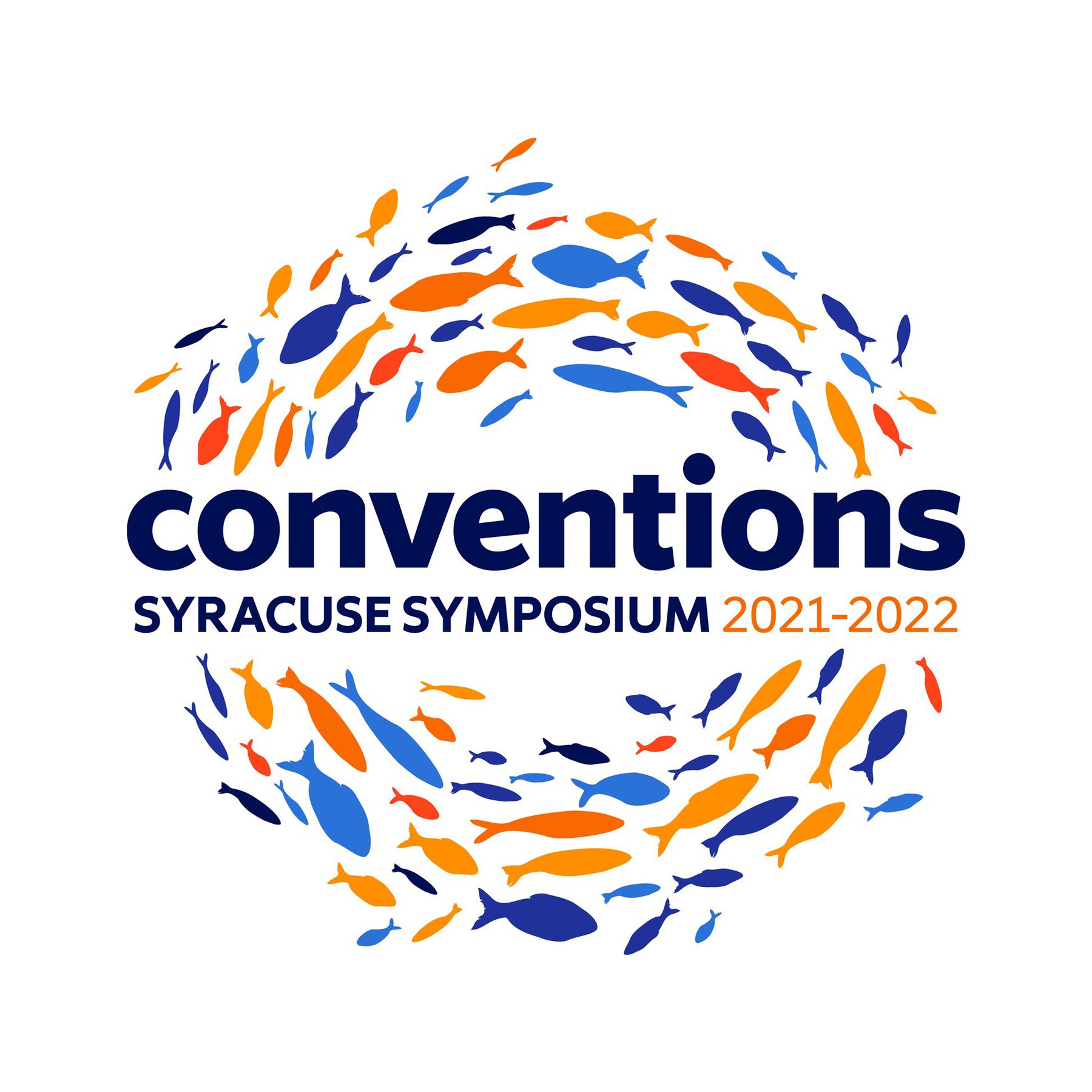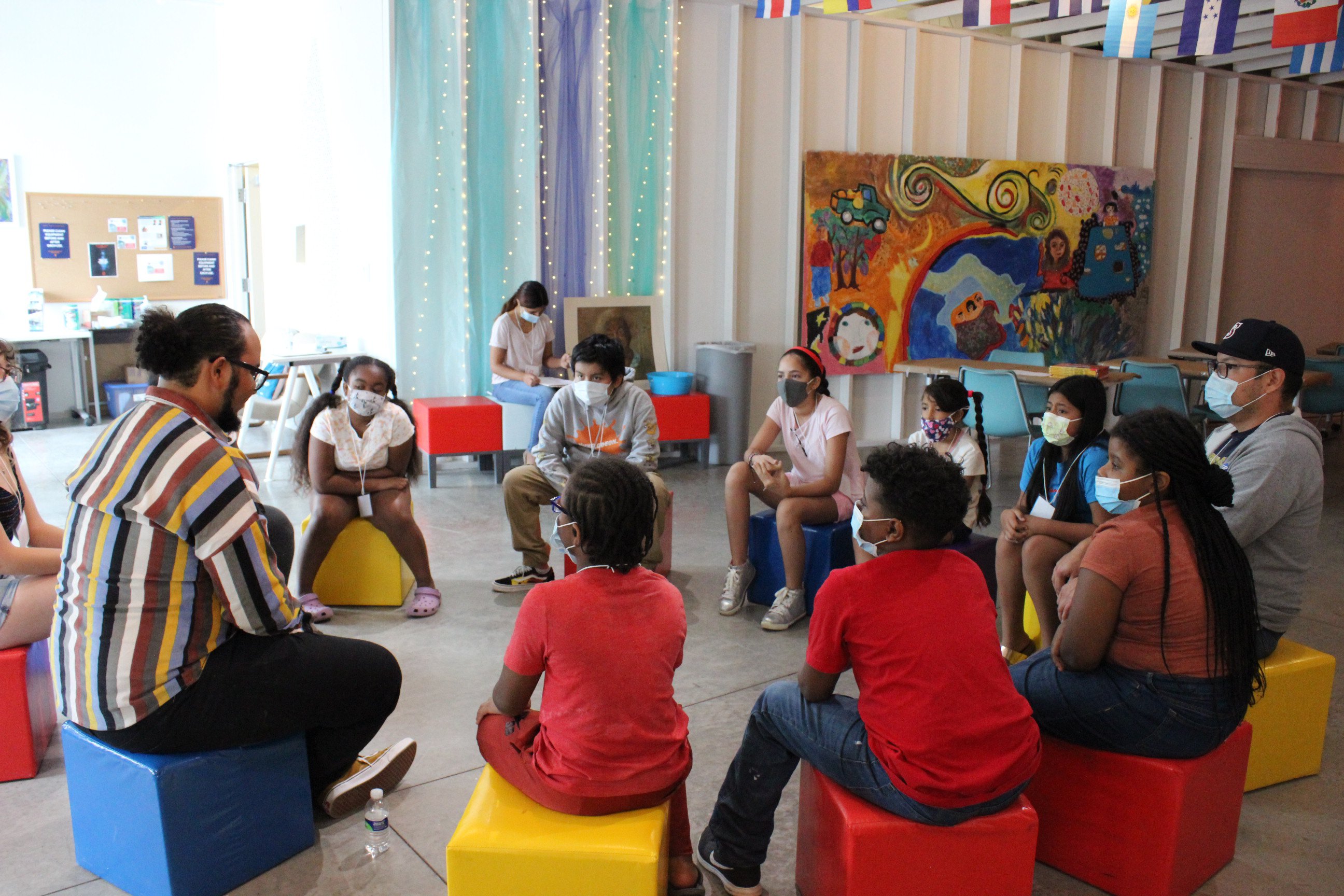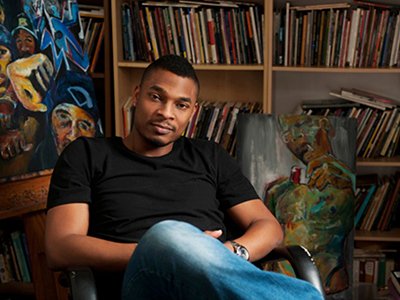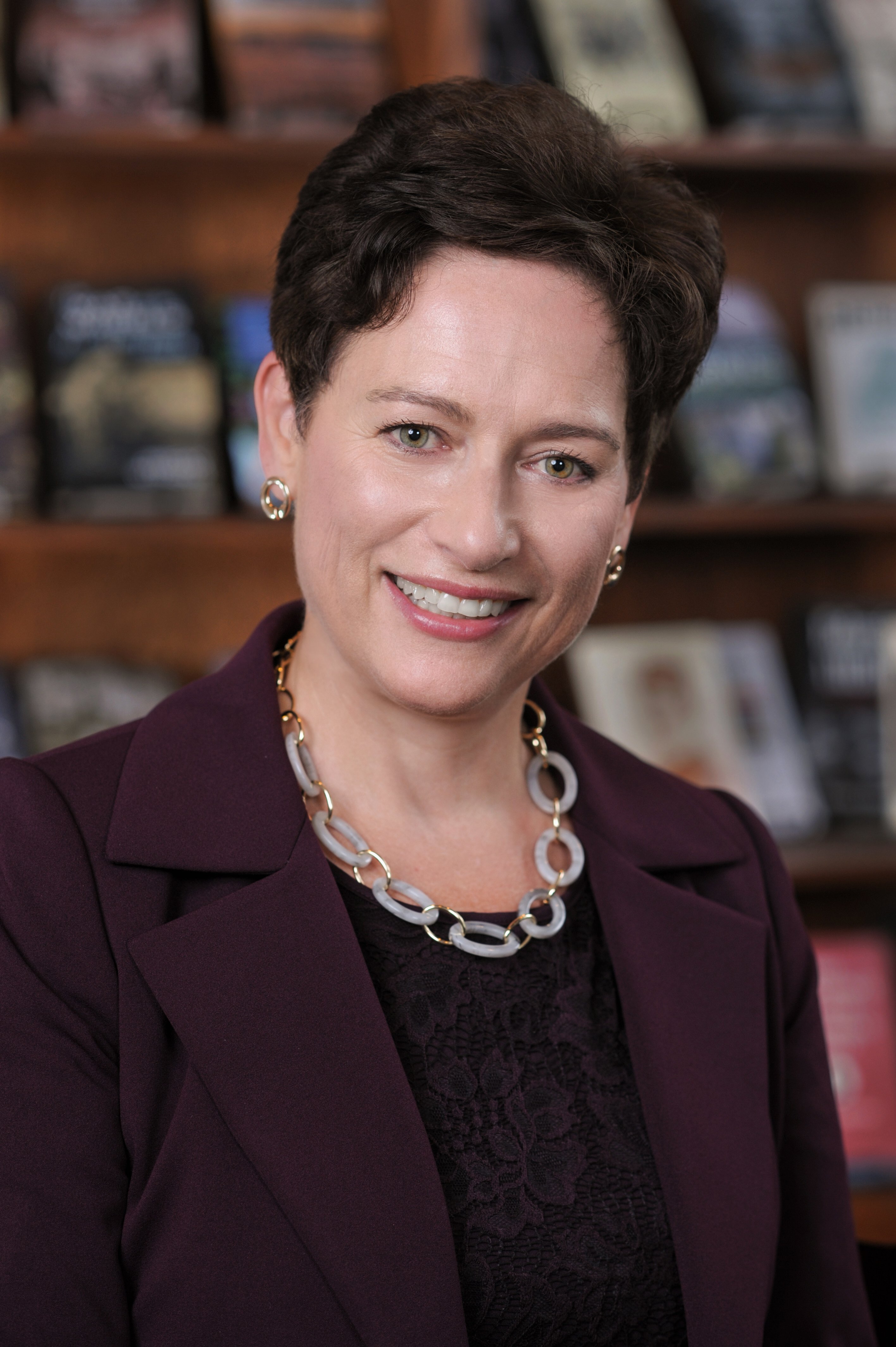The Power of Collectivity
2021-22 Syracuse Symposium explores the theme “Conventions.”

“Timely and timeless,” is how Vivian May, Director of the Syracuse University Humanities Center, describes “Conventions,” the theme of this year’s Syracuse Symposium. In the political sense, she says a convention can be a gathering or convening, as in political conventions or civil rights grassroots organizing. One recent example includes the #BlackLivesMatter movement against police violence for a more just, peaceful world for all, particularly for Black communities. Conventions also take up the concept of norms or expectations (that one follows or seeks to break or change), be they social, religious, familial, linguistic or artistic, among others.
May says this year’s Symposium theme is particularly fitting during the pandemic, as the health crisis has altered ideas of what is (or should be considered) normal in everyday life, how people want to live their lives, and how to inhabit and support a global community across conventional divides and boundaries.
The Syracuse Symposium, now in its 18th year, will investigate and reflect on conventions through a series of lectures, workshops, performances, exhibits, films, readings and more. Hosted by the Syracuse University Humanities Center, the series is intended to broaden people’s views, address humanitarian issues and encourage ethically based action. Symposium’s annual theme is chosen by the Center’s Advisory Board, whose members review proposals and select each year’s final line-up of events and activities.
Kicking off with Heart of the Barrio
Symposium’s season begins with the Heart of the Barrio / Corazón del Barrio exhibit reception on September 18 at 6 p.m. at La Casita Cultural Center, a hub of experiential learning for Syracuse University students. It is also a place of participatory research and cultural heritage preservation for Latinx scholars, artists, community organizers and educators. This in-person/virtual event includes a guided tour of the exhibit, which focuses on the 10-year anniversary of La Casita.
Tere Paniagua, executive director of La Casita and the Office of Cultural Engagement for the Hispanic Community in A&S, says that the anniversary programming and exhibit transcend narrow cultural categorizations of Latinx cultures and focus on the individual and collective strengths and talents of those who have contributed to the Center’s richness over the past decade.

Nearly 200 students each year from 24 different academic programs across the University participate in co-curricular work, from course-related research to service-learning projects. One community engagement project, also supported by the Humanities Center, is La Casita’s annual children’s publication. The book features original drawings and stories by the children (ages 8-12) in La Casita’s dual language youth program, with writing workshops led by Syracuse University students.
“The student volunteers and children immerse themselves in explorations of ideas and writing for publication,” Paniagua says. “For many of these children growing up in disadvantaged circumstances, this is a moment when their work and creativity are recognized and validated by their community, teachers and families.”
La Casita was also part of last year’s Syracuse Symposium, “Futures,” which included the “Abuelas” Exhibit.
Other Symposium Highlights
The 19th annual Syracuse University Human Rights Film Festival, on September 23, 24 and 25, will showcase trailblazing feature documentaries about social justice issues around the world.

In partnership with the Downtown Writers Center, acclaimed poet Terrance Hayes (National Book Award finalist, winner of the 2010 National Book Award for Poetry) will present a poetry reading on October 14, and host a workshop on October 15, discussing conventions of poetic form. Hayes served as the 2017-2018 poetry editor for New York Times Magazine and was guest editor of The Best American Poetry 2014 (Scribner, 2014), the preeminent annual anthology of contemporary American poetry.
On November 17 Jonathan Stone, assistant professor of writing and rhetoric at the University of Utah, will present “Folk conventions/musical traditions: Sound, rhetoric, and race in the Lomax Archive.” Stone will play examples from the archival fieldwork of John and Alan Lomax to demonstrate how they embraced and pushed against tradition. Registrants will receive a playlist and advanced access to excerpts from Stone’s forthcoming book. On November 18 Stone will host an interactive workshop called “Resounding history: Sound, rhetoric, and archival methods,” where participants will draw from his work to consider how sound invites nontraditional approaches to archival, rhetorical, and historiographical methods. Each of those events are presented in partnership with the Departments of Writing Studies, Rhetoric and Composition, Art and Music Histories, English and African American Studies.
Find the full list of fall symposium events.

Symposium Q&A
We recently spoke with Vivian May, who in addition to being director of the Humanities Center also directs the Central New York Humanities Corridor and is professor of women’s and gender studies in the College of Arts and Sciences. She offered insight into this year’s Symposium.
What do you hope people attending any of this year’s events will take away about conventions?
We hope Symposium’s broad engagement with the humanities and the theme will provoke open-ended thinking about what conventions we have come to accept, in our collective and personal lives. In our classes, as researchers, and with and in our wider communities, the humanities can help us confront and rework powerful norms and expectations that shape our daily lives and our imaginations. The power of collectivity, of convening as a community, and thinking about how best to forge coalitions, build connections, and yet not silence differences or ignore disparities, is also something I hope is part of what this year’s programming sparks.
Can you talk about what this year’s Symposium graphic says about conventions?
It is intended to convey a sense of community or gathering together (circling), but also openings for departing or diverging from one’s community—hence, some of the fish turn away or are swimming outward from the group.
With last year’s events being virtual because of the pandemic, did you find that you were able to reach a wider range of audience? Will you continue to offer some events virtually going forward?
Yes! Our impact and imprint for programming grew expansively, with participants from across the nation and around the world engaging with our work. Online format events continue to be more inclusive, for those with health immunity issues right now, and are “greener” in many ways, as we face a global warming crisis. Of course, there are intimate and more personal connections that can be lost online, so a mix of offerings and approaches, to meet various needs and remain inclusive and broadly welcoming, is how we anticipate future seasons will unfold.
This is the 18th symposium, each year with a different theme. What factors go into choosing the theme each year?
Our interdisciplinary Board, comprised of faculty and staff from across the University, thinks carefully about selecting a concept that has many valences and possibilities, offers different ways to be interpreted and applied, and that is relevant across generational, disciplinary, cultural, and historical contexts.
How has the symposium changed or evolved over the years?
One significant change, starting in my second year as Director, was that, given growing interest and demand, we shifted to a two-semester season, to support more offerings and spread out opportunities across the year for students and faculty to engage with all our partners’ compelling ideas and activities—from film and drama to exhibits and lectures to workshops and other hands-on offerings.
At the same time, the initial impetus—to work from and around a concept, and invite our campus partners and participants to plumb its possibilities—remains a constant.
For more information about the Humanities Center or any of this year’s Symposium events, visit the Humanities Center website.
Featured
Vivian M. May Professor
Tere Paniagua Executive Director, Cultural Engagement for the Hispanic Community
